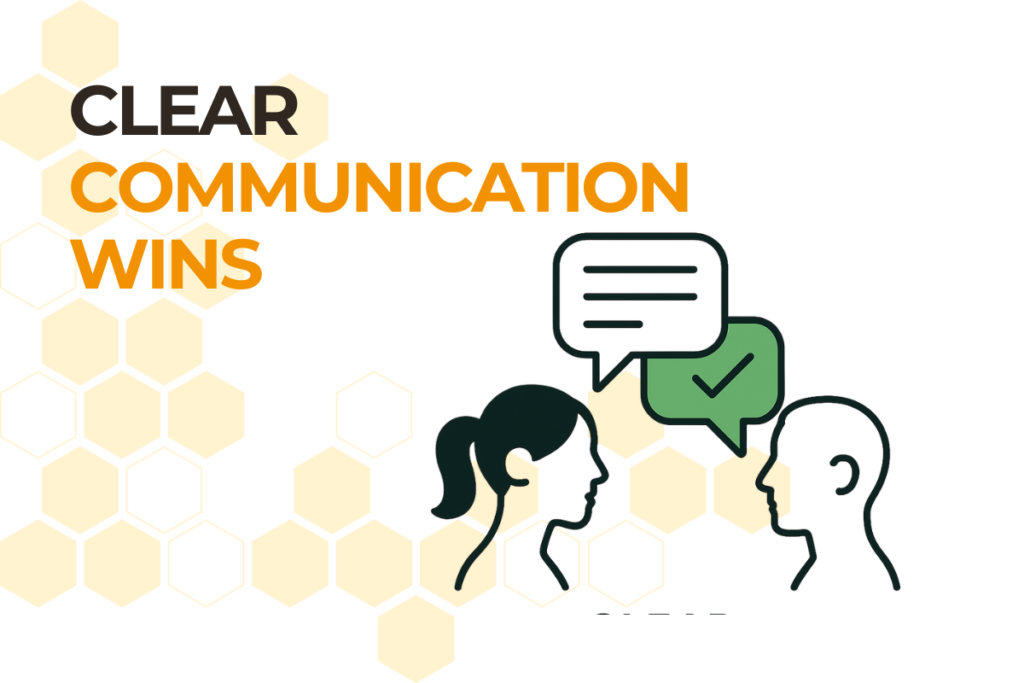Building Trust Through Clear Communication
Running a successful massage therapy clinic isn’t just about delivering great bodywork—it’s about managing client expectations from the very start. Without clear communication, clients can develop unrealistic assumptions about what massage therapy can do. Some might walk in expecting a single session to erase years of chronic pain, while others may think every appointment should be a full-body experience, regardless of their specific needs. When expectations don’t match reality, frustration sets in—for both the client and the therapist.
Misalignment like this can lead to awkward conversations, disappointed clients, and even negative reviews that don’t reflect the quality of care you provide. It also adds unnecessary stress on therapists, who may feel pressured to overdeliver or constantly explain why massage therapy isn’t a one-time fix. Over time, this can lead to burnout and impact the overall vibe of your clinic.
But here’s the thing—most of these issues can be avoided with the right approach. When you take the time to educate clients, set clear boundaries, and reinforce the benefits of consistent care, you create a smoother experience for everyone. This guide will walk you through practical strategies to align expectations, improve satisfaction, and build strong, long-term client relationships that will help your clinic thrive.
Setting the Right Expectations from the Start
Why Clear Expectations Matter
Managing client expectations ensures they understand what massage therapy can and cannot achieve. When expectations are set correctly, clients are more likely to follow treatment plans, appreciate the results, and trust your expertise. Misaligned expectations can lead to negative reviews, fewer repeat appointments, and unnecessary stress for your staff.
Establishing Boundaries in Initial Consultations
The best time to manage client expectations is during the first consultation. Here’s how to do it effectively:
- Listen Actively: Ask about their goals, past experiences, and expectations for massage therapy.
- Explain Treatment Scope: Clarify that massage is a wellness journey, not an instant fix.
- Outline Your Process: Walk clients through the session structure, potential soreness, and the importance of follow-up treatments.
- Set Clear Policies: Discuss session length, pricing, tipping, and cancellation policies upfront to avoid misunderstandings.

Common Misunderstandings in Massage Therapy
Expecting Instant or Permanent Relief
Many clients expect a single massage to eliminate chronic pain. While massage therapy can provide relief, long-term results require consistency.
How to Address This Misconception:
- Explain how muscle tension and chronic pain develop over time.
- Recommend a treatment plan that includes regular sessions.
- Share client success stories that highlight long-term benefits.
Misaligned Expectations About Techniques
Clients may book a Swedish massage expecting deep tissue work or request techniques that fall outside your scope.
How to Clarify Expectations:
- Provide detailed service descriptions on your website and booking forms.
- Reiterate these details during the consultation.
- Offer alternative recommendations if needed while maintaining professional boundaries.
Proactive Communication During Sessions
Checking In Without Disrupting Relaxation
Some clients enjoy chatting, while others prefer silence. Managing client expectations around communication helps create a comfortable environment.
Best Practices:
- Ask about their communication preference at the start.
- Use neutral phrases like, “Let me know if you’d like more or less pressure.”
- Observe body language to gauge comfort levels.
Educating Clients on Post-Massage Expectations
To prevent post-massage concerns, provide clear aftercare instructions. Clients should know:
- Soreness after deep tissue work is normal and can be relieved with hydration and stretching.
- Massage therapy is most effective when combined with proper hydration and mobility exercises.
- Regular sessions lead to better long-term results compared to sporadic visits.
Handling Unrealistic Requests with Professionalism
Clients Who Expect Customized, Unlimited Services
While personalization is important, some clients may request excessive modifications, extra time, or techniques beyond your expertise.
How to Navigate This:
- Reinforce session limitations with phrases like, “This technique isn’t part of my practice, but I can offer this alternative.”
- Stick to your scheduled session time to prevent conflicts and therapist burnout.
- Refer clients to a specialist if their needs exceed your expertise.
Dealing with Last-Minute Appointments and Frequent Cancellations
Some clients assume therapists are always available or frequently cancel appointments, disrupting workflow and revenue stability.
Prevention Strategies:
- Require deposits or prepayments to secure appointments.
- Enforce a clear cancellation policy and communicate it during booking.
- Use a waitlist to manage last-minute openings efficiently.
Using Client Education to Strengthen Relationships
Providing Resources for Self-Care
Educating clients about proper self-care between sessions improves their results and satisfaction.
Ways to Educate Clients:
- Provide handouts with tailored stretching exercises.
- Create short videos on self-massage techniques.
- Suggest complementary wellness practices like yoga or mindfulness.
Reinforcing Treatment Plans
Clients may forget recommendations after leaving the clinic. Regular follow-ups help reinforce treatment plans.
Tactics for Reinforcement:
- Send post-session emails summarizing key takeaways.
- Use automated reminders to encourage consistency.
- Integrate Hivemanager’s client management tools for streamlined communication.

Encouraging Feedback and Continuous Improvement
Collecting and Responding to Client Feedback
Understanding client experiences helps refine your services. Encourage feedback through:
- Anonymous post-session surveys.
- Direct check-ins at the end of appointments.
- Monitoring and responding to online reviews professionally.
Using Feedback to Enhance Your Services
- Identify recurring concerns and adjust your approach.
- Train staff on client communication best practices.
- Showcase positive testimonials on your website to build trust.
Elevating Client Satisfaction and Clinic Success
By proactively managing client expectations, you create a foundation of trust that keeps clients coming back. When people understand what to expect—whether it’s how many sessions they’ll need, what techniques are best for their condition, or why follow-up care matters—they feel more confident in your expertise. This not only improves client satisfaction but also strengthens long-term relationships that contribute to steady growth for your practice.
Clear communication, structured policies, and ongoing education prevent misunderstandings before they happen, reducing the likelihood of frustration or unrealistic demands. When clients feel heard, respected, and well-informed, they’re more likely to appreciate your work, leave positive reviews, and refer others to your clinic.
With the right approach, you won’t just be managing expectations—you’ll be creating an exceptional client experience that allows your massage therapy clinic to thrive.
Frequently Asked Questions
Explain that while massage therapy provides relief, chronic issues require ongoing treatment. Use an analogy like exercise—it takes time to see results.
Politely inform them that the requested technique is outside your practice scope. Offer an alternative that aligns with their goals or refer them to a specialist.
Implement a clear cancellation policy with prepayment requirements. Send email or text reminders to ensure clients remember their appointments.
Provide take-home materials, create educational content online, and send follow-up emails with personalized recommendations to maximize massage benefits.


